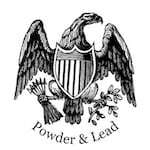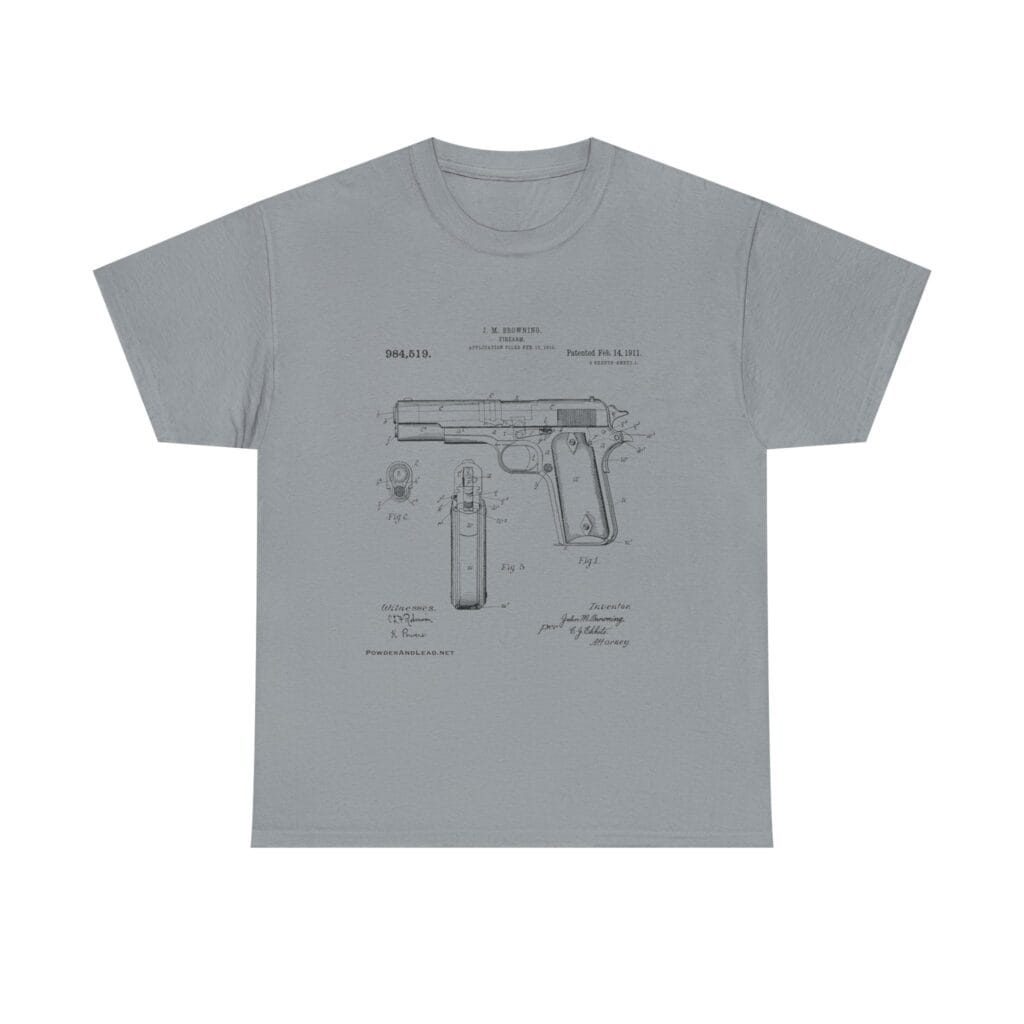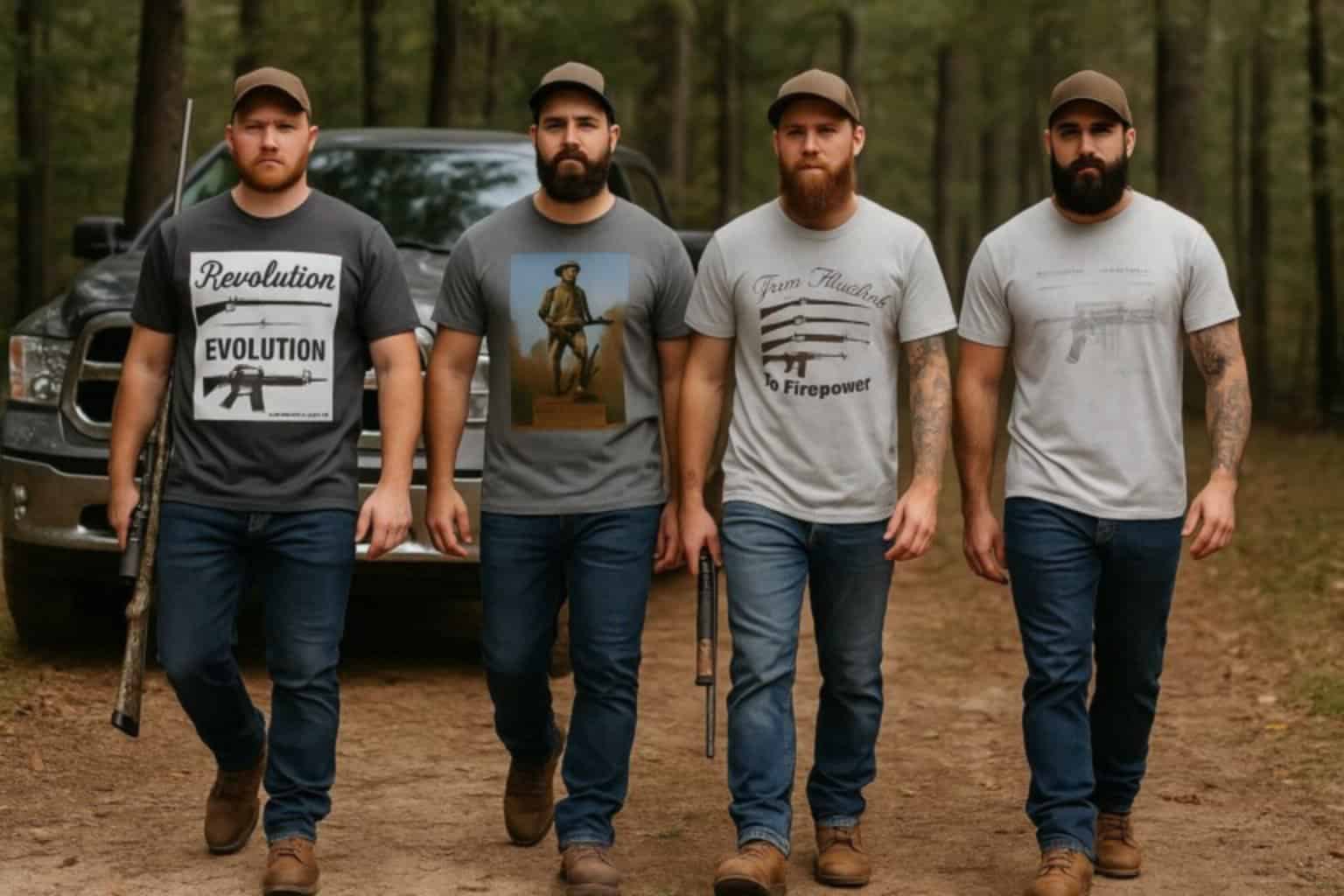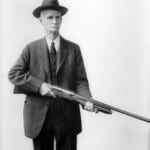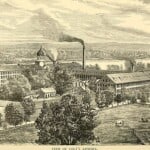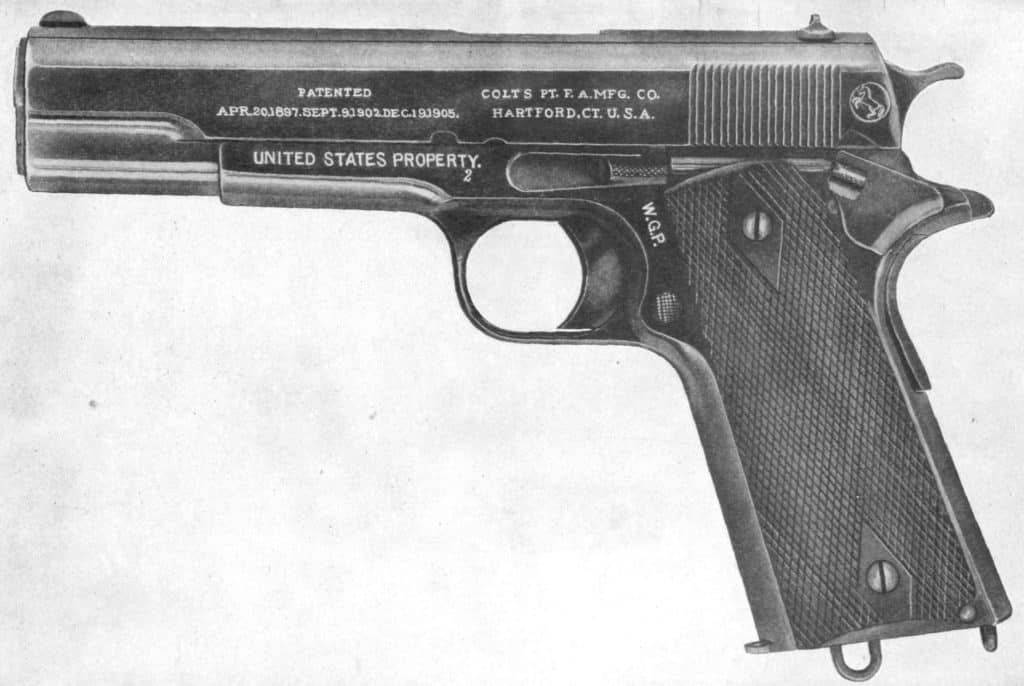
1911: A Century-Old Legacy of Firepower
The Colt 1911 pistol stands as the most influential sidearm ever designed. More than a weapon, it is an American engineering achievement that has endured for over a century. Conceived by John Moses Browning in the early 1900s, adopted by the U.S. military in 1911, and still produced today by dozens of manufacturers, it remains a symbol of precision, reliability, and unmatched shootability.
In an era when many firearms rise and fall within a decade, the 1911 has not just survived—it has evolved, spanning war zones, competition ranges, and everyday carry holsters. Understanding its journey means understanding the evolution of the modern handgun.
Origins of the Colt 1911: Browning’s Answer to a Battlefield Problem
At the end of the 19th century, the U.S. Army faced a tactical dilemma. The .38 Long Colt revolvers used during the Philippine-American War lacked the stopping power to reliably halt close-quarters attackers. A replacement was needed—something powerful, reliable, and fast to reload.
Enter John Moses Browning, already renowned for his designs with Winchester and Fabrique Nationale. He engineered a new short-recoil, locked-breech, semi-automatic pistol built around a new cartridge—the .45 Automatic Colt Pistol (ACP). His prototype was tested under extreme endurance trials: 6,000 rounds fired without major failure, an almost unheard-of record at the time.
On March 29, 1911, the U.S. Army officially adopted Browning’s design as the Model of 1911. It immediately set a new standard for military handguns and became the foundation for virtually every semi-automatic service pistol that followed.

Key Design Features and Operation
The 1911 is admired not only for its rugged simplicity but also for its elegant mechanics. Its defining elements include:
- Short-recoil operation: Barrel and slide recoil together briefly before unlocking, ensuring controlled cycling under heavy loads.
- Single-action trigger: Crisp, light, and consistent for accurate shooting.
- Grip and thumb safeties: Redundant safety systems that made “cocked and locked” carry (hammer back, safety engaged) both safe and fast to deploy.
- Steel frame and slide: Durable construction that absorbs recoil and provides stability.
- Seven-round magazine (originally): Double the capacity of the revolvers it replaced.
Every feature reflected purposeful design, balancing safety, ergonomics, and raw power. Even after 100 years, modern shooters praise the pistol for its unmatched trigger feel and natural grip angle.
Wartime Production and Major Manufacturers
When America entered World War I, Colt couldn’t meet military demand alone. Production was licensed to several companies, including Springfield Armory, Remington-UMC, Savage Arms, and North American Arms Company. By the end of the war, more than two million had been produced.
After the war, refinements led to the M1911A1 (introduced in 1926), with a shorter trigger, arched mainspring housing, and improved sights. These subtle adjustments made it more comfortable for soldiers with different hand sizes.
World War II drove production even higher. New contracts went to Remington Rand, Ithaca Gun Company, Union Switch & Signal, and even Singer, the sewing-machine company. Collectors today still prize Singer-made pistols for their rarity.
In total, more than four million were produced for military service from 1911 through the end of the Vietnam War.
The .45 ACP Cartridge: Power and Purpose
The .45 ACP (Automatic Colt Pistol) cartridge is central to the 1911’s legacy. Designed by Browning himself, it launched a 230-grain bullet at around 830 feet per second—a combination of mass and velocity that offered superior stopping power without excessive recoil.
The cartridge’s relatively low chamber pressure meant less muzzle blast, longer service life for parts, and excellent terminal performance at close range. These qualities explain why it dominated U.S. service sidearms for over 70 years.
Modern loads expand the 1911’s versatility: lighter +P defensive ammunition, match-grade competition rounds, and reduced-recoil training loads all function within the same robust design.
The Global Footprint
The 1911 was not just an American icon—it became a global one.
- Norway produced the Kongsberg Colt under license.
- Argentina manufactured the Sistema Colt 1927, still highly regarded for quality.
- The Philippines fielded their own versions, continuing production into the modern era.
- Even nations like Brazil, China, and Canada built or issued 1911-pattern pistols.
From World War I trenches to modern police units, the pistol's reach has been global and enduring.
Civilian, Law Enforcement, and Competition Use
After World War II, surplus 1911s flooded the civilian market. They quickly gained popularity among law enforcement, target shooters, and self-defense enthusiasts.
In competition, the pistol dominated disciplines like NRA Bullseye and IPSC, where accuracy and a clean trigger are king. It's customizable platform allowed gunsmiths to tune every part: match barrels, skeletonized triggers, fiber-optic sights, and custom grips turned a battle pistol into a precision instrument.
Law enforcement agencies and SWAT units continued to carry tuned .45s well into the 1990s, long after polymer pistols became standard issue.
Modern Manufacturers and the Expanding Market
Today, nearly every major handgun manufacturer offers its own take on the 1911.
- Colt continues to produce classic Government and Commander models.
- Springfield Armory builds high-end and affordable versions, from the Range Officer to the TRP Operator.
- Kimber brought mass-produced custom performance into the mainstream.
- Dan Wesson and Sig Sauer produce premium variants with modern styling and fit.
- Rock Island Armory offers rugged, budget-friendly pistols that maintain GI simplicity.
- Wilson Combat, Ed Brown, Les Baer, and Nighthawk Custom craft bespoke 1911s with hand-fitted precision rivaling fine watches.
- Ruger, Tisas, Bul Armory, and Girsan contribute affordable, reliable options for new shooters.
The breadth of the market shows one undeniable truth: there is a 1911 for everyone—from collectors of original WWI Colts to shooters running red-dot-equipped tactical builds.
Double-Stack 1911s and the Rise of the 2011 Platform
One of the biggest evolutions of Browning’s design came in the 1990s with the development of double-stack 1911s. Traditional single-stack magazines limited the .45 ACP versions to seven or eight rounds. Competitive shooters wanted more capacity without giving up the legendary trigger.
Manufacturers widened the frame to accept staggered magazines, creating pistols that held 14–20 rounds of 9mm or .38 Super. The leader in this field was STI International, which introduced the 2011 platform—a modular evolution of the 1911 with a steel upper frame and removable polymer grip module.
Rebranded as Staccato, these pistols now dominate practical shooting sports and are increasingly adopted by law enforcement for their blend of 1911 ergonomics, capacity, and modern reliability. Models like the Staccato P and Springfield Prodigy prove that the 1911 architecture still thrives in the 21st century.
Caliber Variants: Beyond the .45
While the 1911 is synonymous with the .45 ACP, it has been adapted to a wide range of calibers:
- 9mm Luger – higher capacity, lighter recoil, faster follow-up shots.
- .38 Super – a competition favorite offering high velocity and flat trajectory.
- 10mm Auto – powerful hunting and defense round, offering magnum-level energy.
- .40 S&W – balance between .45 power and 9mm capacity.
- .22 LR – used for inexpensive training and target practice via conversion kits.
- .45 Super / .460 Rowland – high-pressure conversions for enthusiasts seeking extreme energy levels.
This adaptability is unmatched among classic pistol designs, keeping the 1911 relevant for shooters of every discipline.
The 1911 vs. Modern Pistols: Striker-Fired and Hammer-Fired Comparisons
Modern handguns fall into two broad categories: striker-fired and hammer-fired. The 1911 belongs to the latter, yet its single-action operation sets it apart from both its descendants and rivals.
Striker-fired pistols—like the Glock 19, Sig Sauer P320, and Smith & Wesson M&P—are lighter, simpler, and offer larger magazine capacities. They excel in duty use where ease of maintenance and consistency matter most.
However, the 1911 maintains critical advantages:
- A cleaner, shorter trigger pull for better accuracy.
- A grip angle that points naturally for instinctive shooting.
- A steel frame that reduces muzzle rise and recoil.
- Superior parts availability and customization potential.
Among hammer-fired double-action pistols (like the Beretta 92FS or CZ 75), the 1911’s single-action trigger remains unmatched. The first pull on DA/SA pistols is long and heavy; the 1911’s is light and consistent from the first shot to the last.
The Custom and Aftermarket Ecosystem
No pistol platform offers more aftermarket support than the 1911. Every component—trigger, sear, hammer, grip safety, mainspring housing, barrel, bushing, and slide—can be replaced or tuned.
Gunsmiths have spent decades perfecting the art of the 1911 trigger job, achieving break weights under three pounds without compromising safety. Modern 1911s come optics-ready, with RMR-cut slides, match barrels, threaded muzzles, and tactical rail systems.
Whether for IDPA, USPSA, Bullseye, or defensive carry, the modularity of the 1911 ensures it never becomes obsolete.
Enduring Legacy of the 1911
The Colt 1911 isn’t just a gun—it’s a living blueprint for modern firearms. Its blend of engineering purity, shootability, and emotional appeal continues to attract new generations of shooters. More than a century after its adoption, the 1911 is still in production, still winning matches, and still trusted by professionals who value precision over fashion.
Even in an age of polymer frames and optics, the 1911 remains a tactile connection to craftsmanship and mechanical truth. When you fire one, you feel the lineage of history—each smooth trigger pull a conversation between past and present.
Key Takeaways
- Dominates in competition, defense, and collector markets.
- Designed by John Browning, adopted by the U.S. Army in 1911.
- Chambered in .45 ACP, but available in 9mm, .38 Super, 10mm, and more.
- Over 4 million produced for military use and countless civilian models since.
- Manufactured by Colt, Springfield Armory, Kimber, Dan Wesson, Wilson Combat, Staccato, and dozens more.
- Continues to evolve through double-stack and 2011 designs.
Discussion groups can be found here:
If you know of any forums or sites that should be referenced on this listing, please let us know here.
